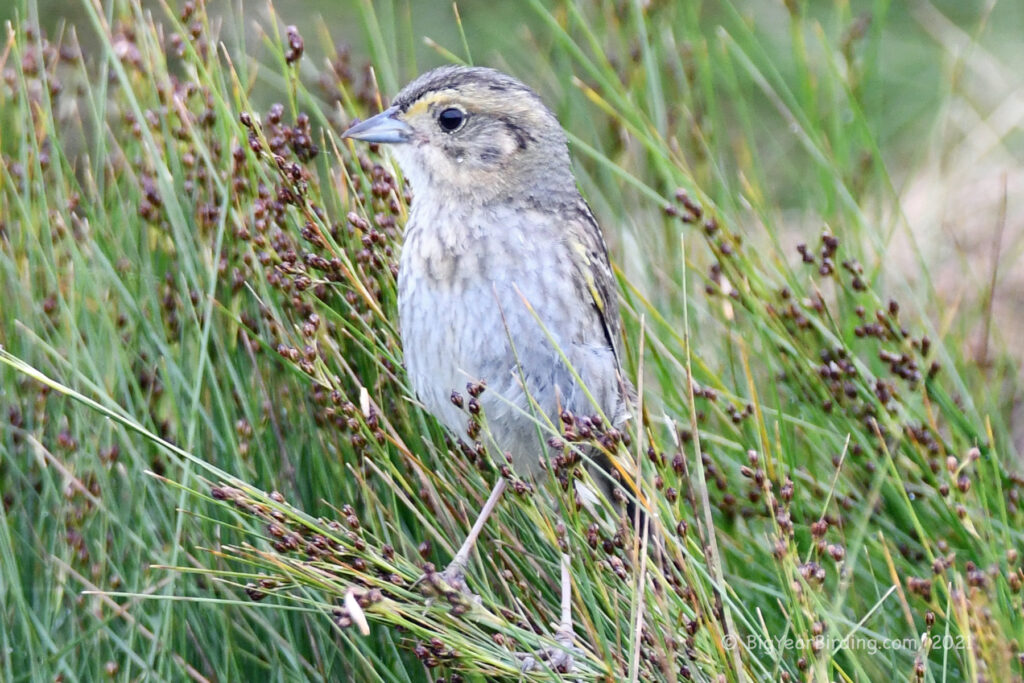
The Nelson’s Sparrow (Ammodramus nelsoni) is a small migratory bird that breeds in wet meadows and marshes throughout the northern United States and Canada. Adults typically measure between 4.7 and 5.5 inches in length, with a wingspan of 6.7 to 7.9 inches. They weigh between 0.4 and 0.5 ounces.
One of the key distinguishing field marks of the Nelson’s Sparrow is its distinct facial pattern, which features a gray or brown crown, a gray face with a dark eyeline, and a buff-colored cheek patch. The breast and flanks are streaked with brown, and the back is a uniform brownish-gray. The beak is short and pointed, and the legs are pinkish-brown.
The Nelson’s Sparrow is a long-distance migrant, spending the winter along the Atlantic and Gulf Coasts of the United States, as well as in the Caribbean and Central and South America. During the breeding season, they are found primarily in freshwater marshes, tidal marshes, and wet meadows in the northern Great Plains and Great Lakes regions, as well as in coastal areas of New England and eastern Canada.
Male Nelson’s Sparrows are known for their distinctive song, which consists of a series of buzzing trills that can be heard from a distance. During the breeding season, males defend their territories by singing and engaging in displays of aggressive behavior, such as puffing up their feathers and flicking their wings.
Like many wetland birds, the Nelson’s Sparrow faces a number of threats, including habitat loss and degradation, climate change, and predation by non-native species. However, conservation efforts such as wetland restoration and habitat protection have helped to stabilize populations in some areas. Birdwatchers and conservationists alike continue to appreciate the unique beauty and resilience of this small but mighty bird.
